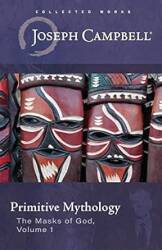
Dewasanzan
Dewasanzan-jinja, the Primary Shrine of the Three Mountains of Dewa
Dewa Sanzan at the summit of Mount Haguro
is the primary shrine of the
Three Mountains of Dewa,
associated with the Shugendō
syncretic mountain worship faith.
Mount Haguro is the only one of the three accessible year-round,
and so its shrine is the main shrine for the entire complex.
Other pages in this series show me reaching the ryokan
where I stayed, starting up the mountain,
and following the path of 2,446 stone steps.
Here's what you find at the summit!
Arriving at the Top of the Mountain Path
Here's the view as you step through the torii at the top of the path into the open space on the summit. From left: Itsukushima Shrine, Hachikosha, and then Dewasanzan-jinja, the main shrine, with dark red walls.
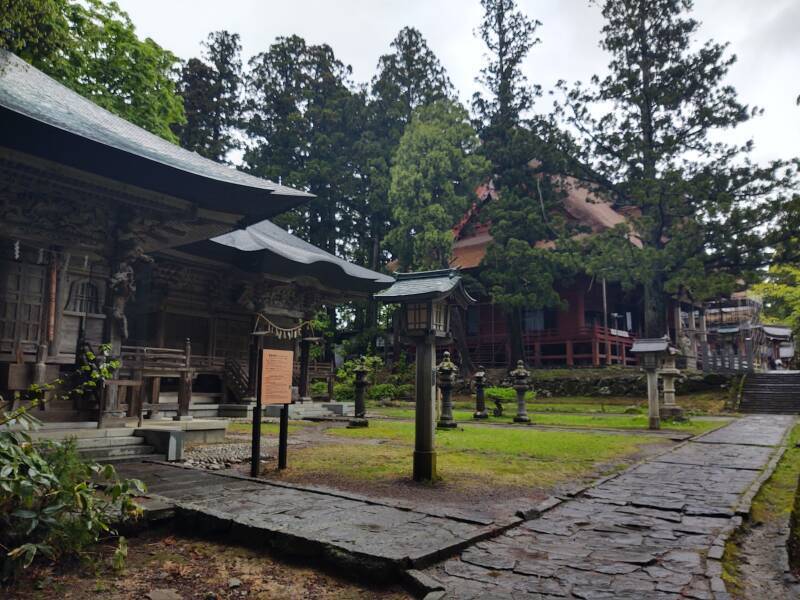
Below, looking back toward the trail, from left: the torii, Itsukushima Shrine, then Hachikosha.
Itsukushima Shrine is known for its intricate wooden carvings depicting dragon gods from the Seto Inland Sea.
Enshrined:
Munakata Sanjin
(The Three Deities of Munakata)
(Tairihime no kami,
Ichikishimahime no kami,
Tagitsuhime no dami)
Deities of the ocean, navigation, wealth, and handicrafts
Divine virtues: Abundant fisheries catch,
marine safety,
business prosperity,
artistic improvements,
growing wealth
Tsuhayamusubi no kami
Said to be a tutelary deity of Amenukogame no mikoto
as well as the same deity as
Homusuhinomitama no kami
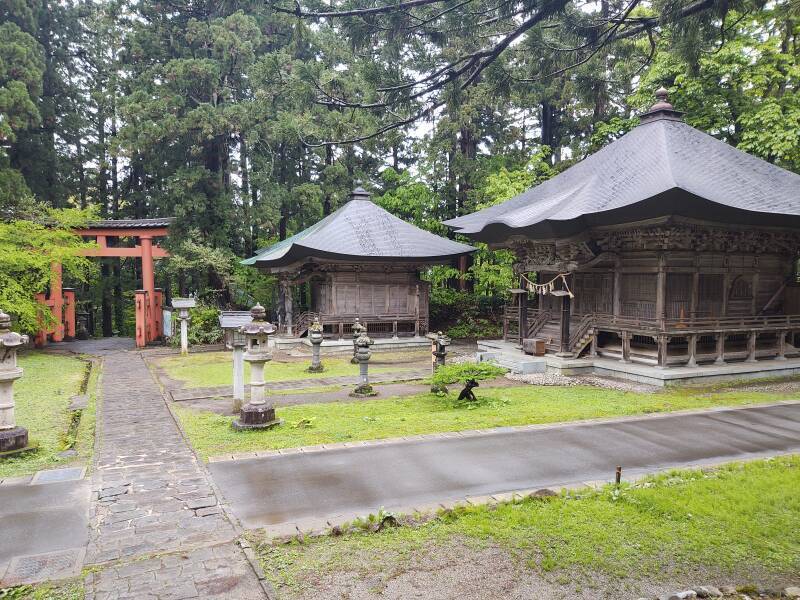
At right above, Hachikosha enshrines Prince Hachiko, who arrived here in 593 and founded Dewa Sanzan.
Hachiko was fleeing the Imperial court near today's Nara after an agent of the Soga clan assassinated his father, Emperor Sushun. Hachiko went north to the coast of Honshū and then sailed far to the north, beyond the Imperial government's control.
The legend says that when he arrived near today's Tsuruoka City he saw eight maidens dancing to the sound of flutes on a large rock. He landed there, and then was guided from the shore and up Mount Haguro by Yatagarasu, the three-legged crow. There, Hachiko became aware of the Haguro Gongen, the god of the mountain.
Given the strong emphasis on the divinity of the Emperor through the years of what the Allies called "State Shintō" from 1868 to 1945, and this being a shrine to the first-born son of an Emperor and thus a direct descendant of the gods, the Hachikosha shrine was guarded by Imperial Japanese Army troops through what the West calls World War Two, or the years 1937–1945 for Japan, or even 1931–1945 when you include Japan's military occupation of Manchuria.
Yatagarasu is the Japanese version of a mythological creature recognized across East Asia. The earliest known depictions of a three-legged divine bird appeared around 5000 BCE on objects found in the lower Yangtze River delta area and in the neolithic Yangshao culture area along the middle of the Yellow River.
In Japanese mythology, Yatagarasu is seen as evidence of divine intervention in human affairs. Emperor Jimmu, the first Emperor of Japan, is believed to be the grandson of the grandson of Amaterasu, the Sun Goddess. Yatagarasu is said to have guided Jimmu to Yamato, a province around today's Nara, to establish his court, where he ruled 660–585 BCE.
The earliest purported Japanese histories, actually compilations of legends and clan traditions and genealogies, were written in the early 800s CE, about 1400 years after the events they describe. The early documents don't go deep into the details, but with the Imperial support and, really, re-invention of Shintō after the Meiji Restoration, Yatagarasu was said to be an incarnation of the early deity Kamotaketsunumi no Mikoto.
Anyway, it's a Very Big Deal if Yatagarasu guides someone. Here's a depiction of Yatagarasu guiding Emperor Jimmu.
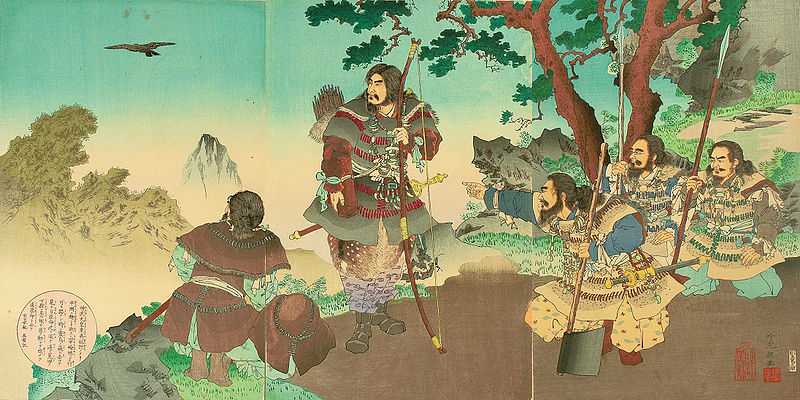
Woodblock print by the artist Ginko Adachi, who was active 1874–1897, illustrating the story of Yatagarasu guiding Emperor Jimmu, from the Nihon Shoki or Chronicles of Japan.
Dewasanzan-jinja
Dewa Sanzan refers to the three sacred mountains of Mount Haguro, Mount Yudono, and Mount Gassan in what was the ancient province of Dewa.
–jinja indicates that something is a Shintō shrine. Many architectural features mark this structure as having been built as a –ji, a Buddhist temple, but everything was fully converted to Shintō with the associated belief that the Emperor is directly descended from the early gods.
Dewasanzan-jinja is the main shrine for this mountain, but it is also the main shrine for the entire three-mountain complex. The shrine on Mount Yudono is considered to be the most sacred. However, that mountain's greater height and deeper snow leads to that shrine only being open from late spring into early autumn. Dewasanzan-jinja is the only mountaintop shrine of the three that's open year-round. And so, it serves as the overall three-mountain shrine. This main shrine is also called the Sanshin Gōsaiden, literally meaning "Three-God-Combined Temple", further complicating matters.

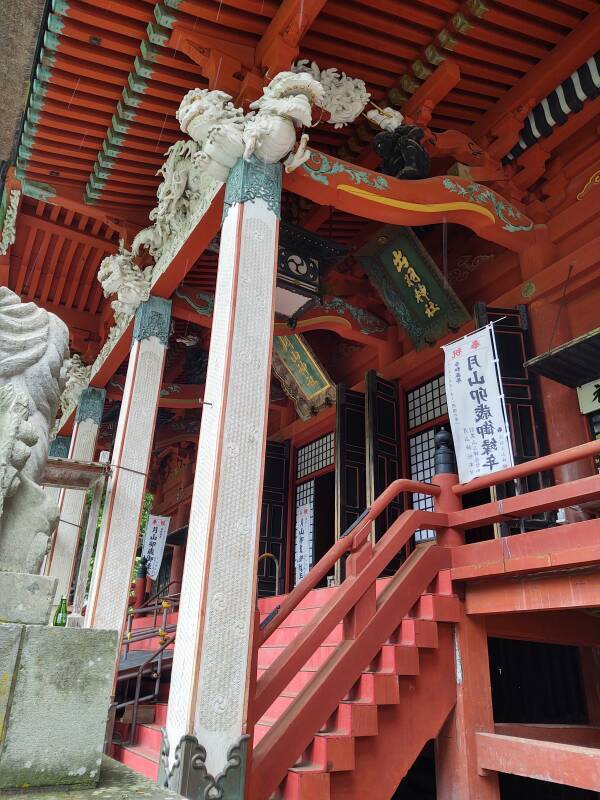

Looking into the main hall, the decoration with representations of figures looks Buddhist.
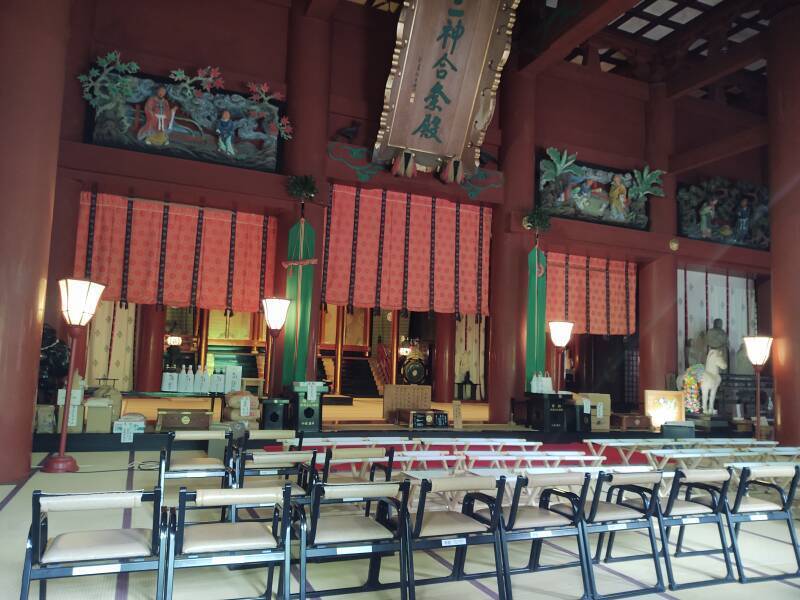
The altar, however, is austerely Shintō.
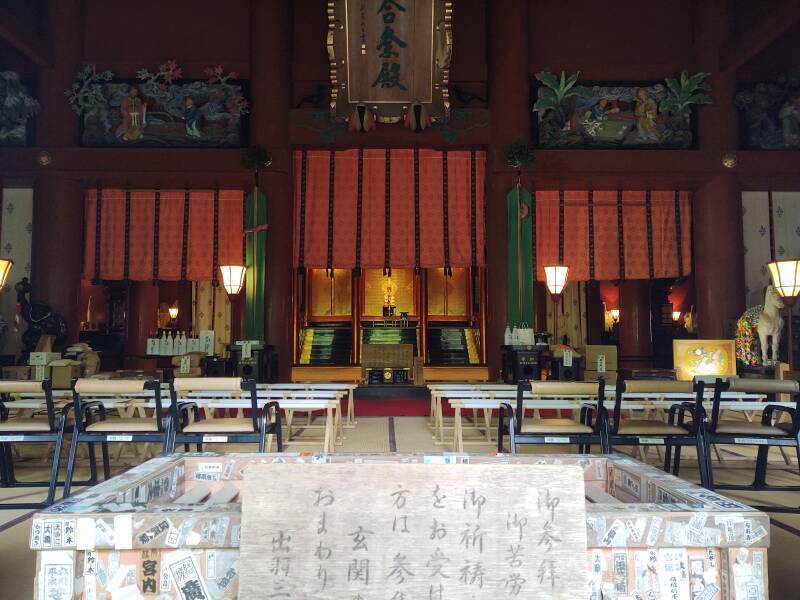
Whether Shintō or Buddhist, large wooden structures with thatched roofs and lacquered interiors on mountain tops are susceptible to lightning strikes and fires. A water cannon is permanently mounted nearby.
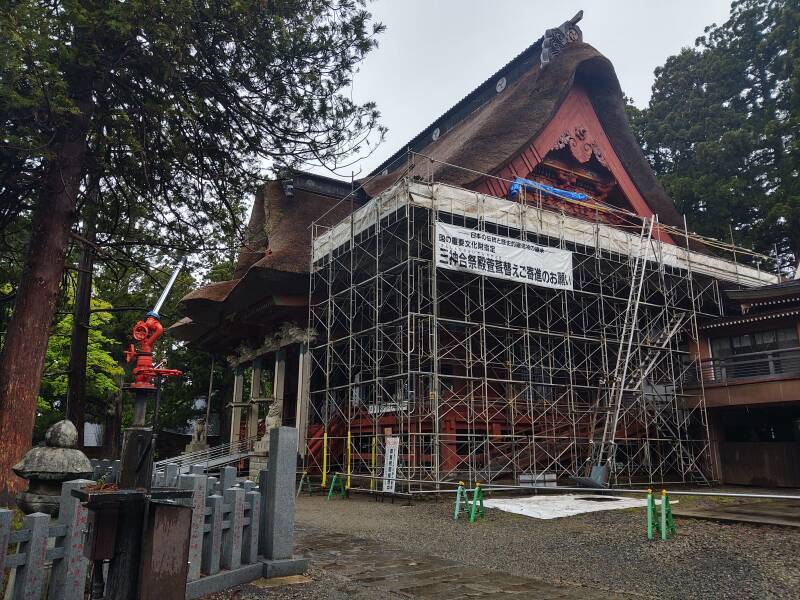
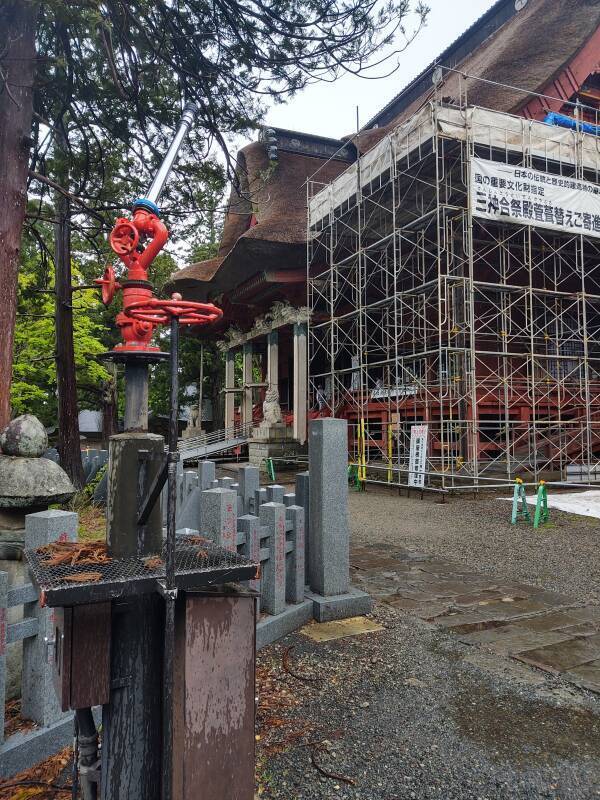
Turning to look the opposite direction past the water cannon, the Shōrōdō or belfry has a thatched roof and an unusual shape.
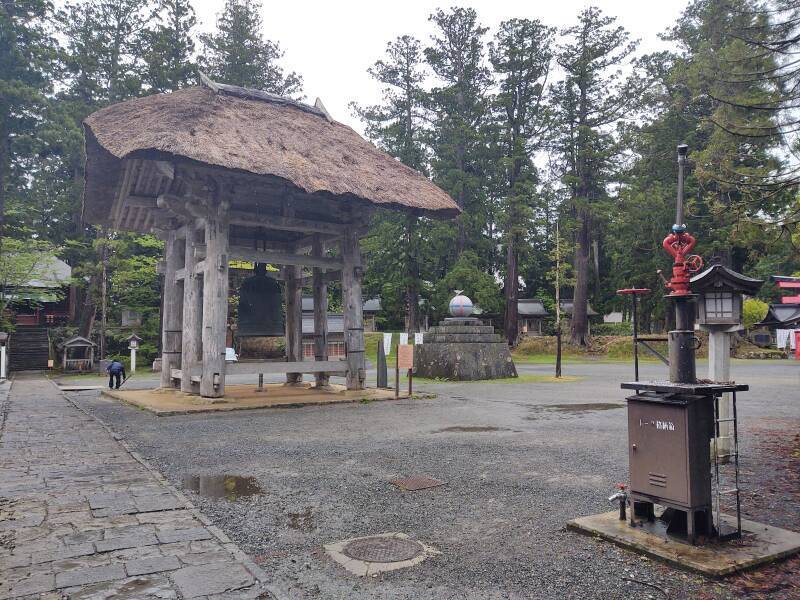
Its bell is described as the third biggest and oldest temple bell in Japan.

Kagami Ike is a pond in front of the main shrine. Over 500 bronze mirrors have been discovered in it. And yes, that's the remains of piled-up snow still melting under a layer of evergreen needles during my visit on May 7th.

You don't have to walk to the summit. This torii leads from the parking lot at the top of the road to the shrine complex.
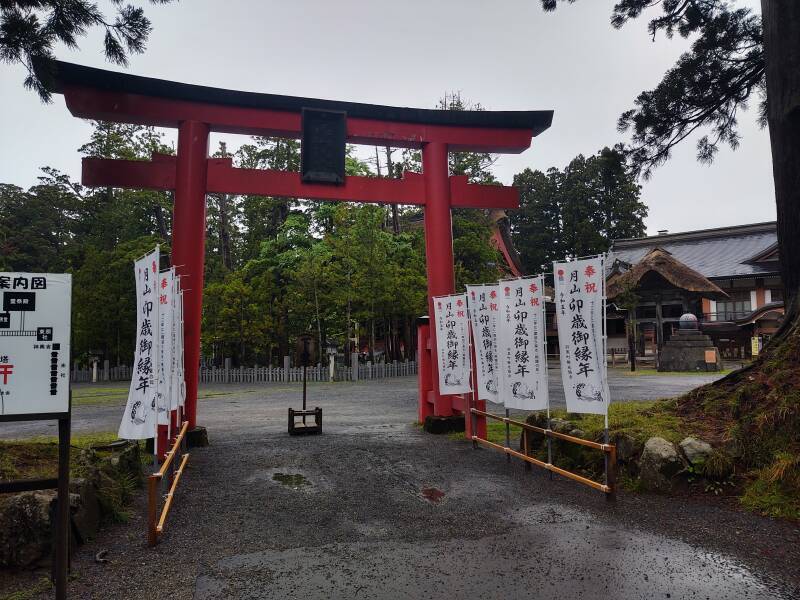
Sanshuden, to the right, between Dewasanzan-jinja and Reisaiden, contains a museum with many statues and other artworks.
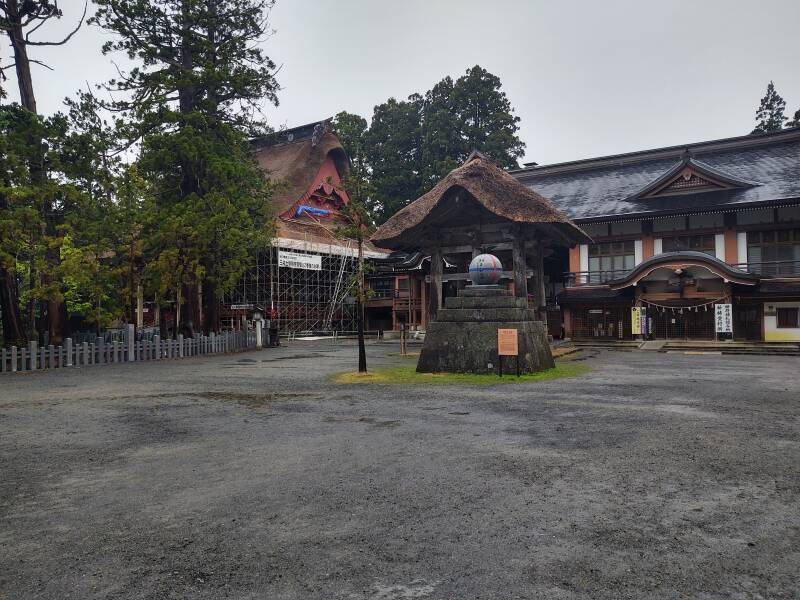
Reisaiden, the Building of Enshrined Spirits
Reisaiden is the Building of Enshrined Spirits.
The mountain enshrines spirits of the departed dead as a site for peace and tranquility of ancestral spirits. The current building was reconstructed in 1983. A painting on the ceiling "Ten'nyo to Ryū" or "The Heavenly Maidens and the Dragons" is a piece by Funio Kumazawa. The celestial world where those heavenly maidens live is believed to be the world where one can obtain longevity of 8,000 years, and the painting holds the wish for the ancestral spirits to ascent to this world, which is protected by the Dragon deities.
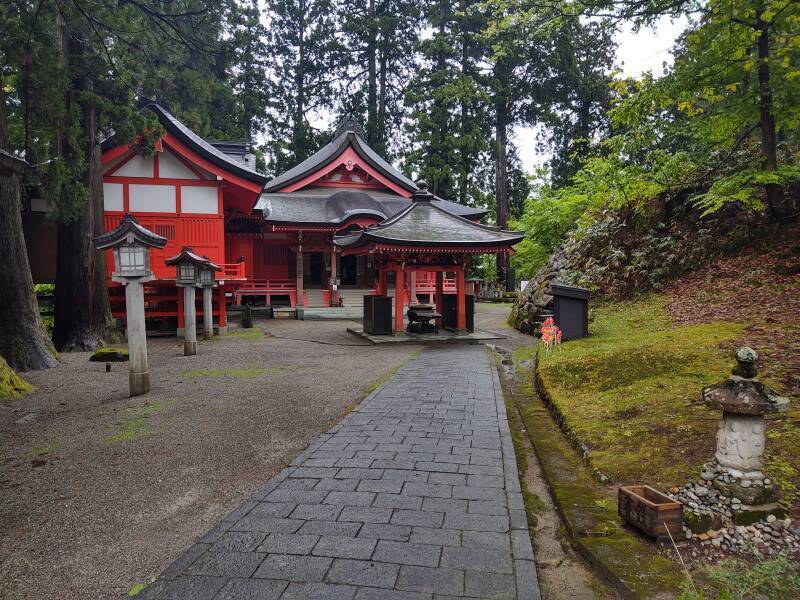
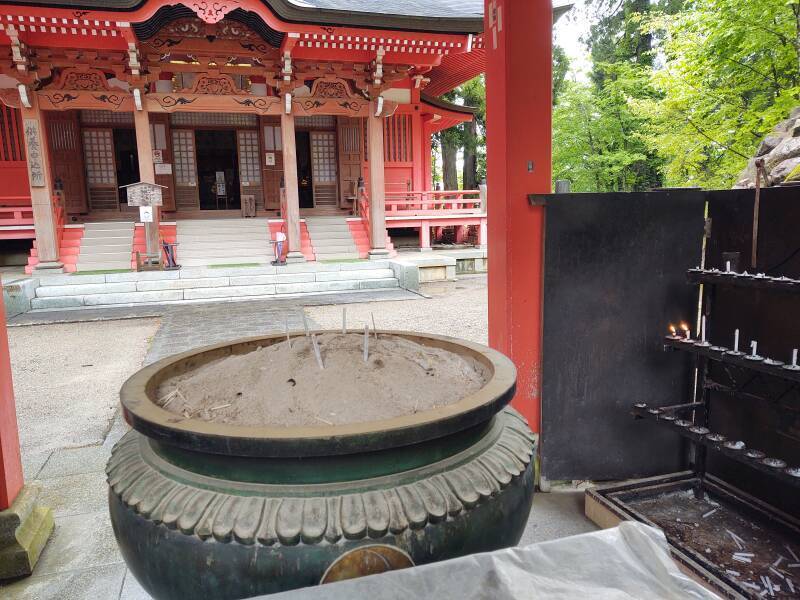
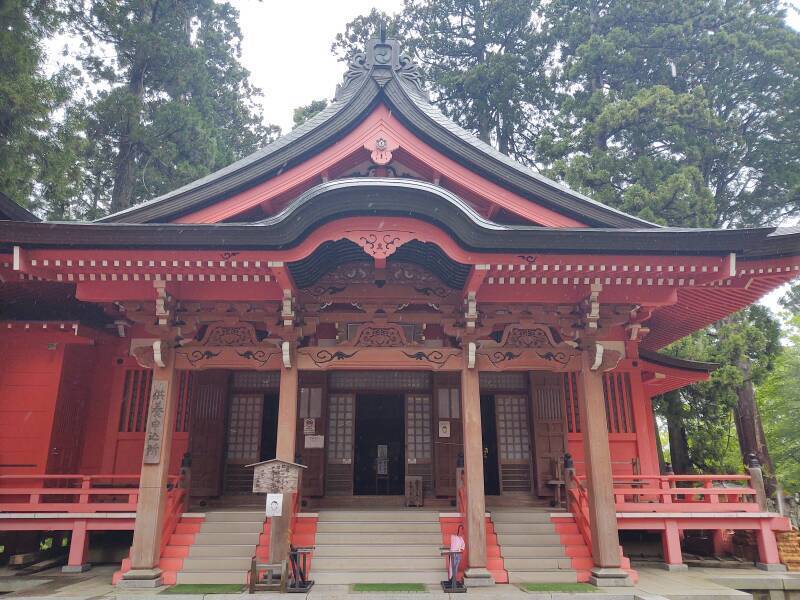
The Old Ablutions Tank
Buddhism and Shintō have nearly identical procedures for ritual ablutions before entering sacred space.
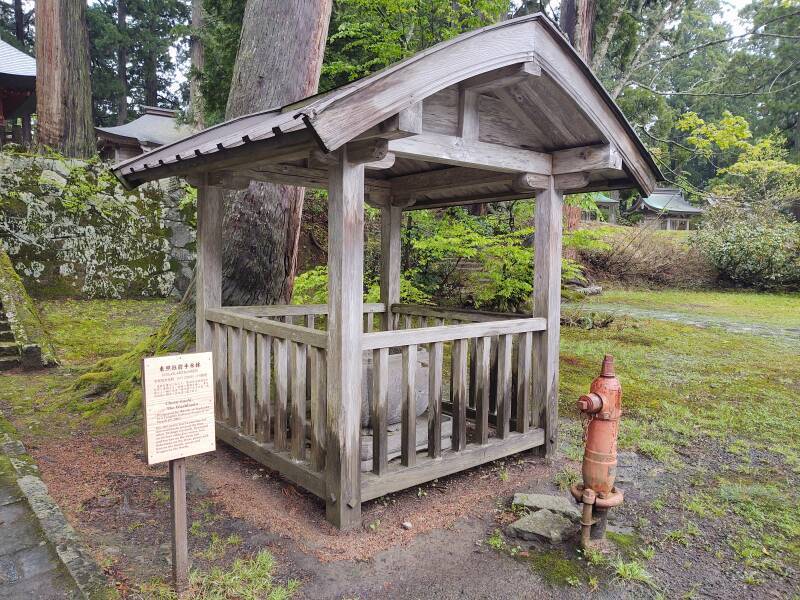
Chozu-bachi, The Washbasin
The 50th bettō Ten'yū
constructed this washbasin around the time when
Tōshōgū was built.
Decorated on all four sides are:
waves, koi, and ten'nyo on the East,
old fishermen on the West,
peony and lion on the South,
waves and dragon on the North.
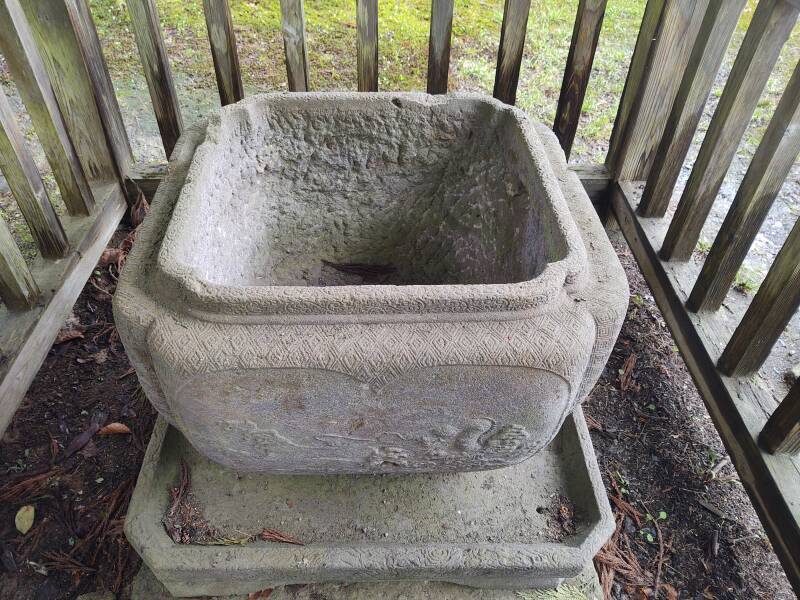
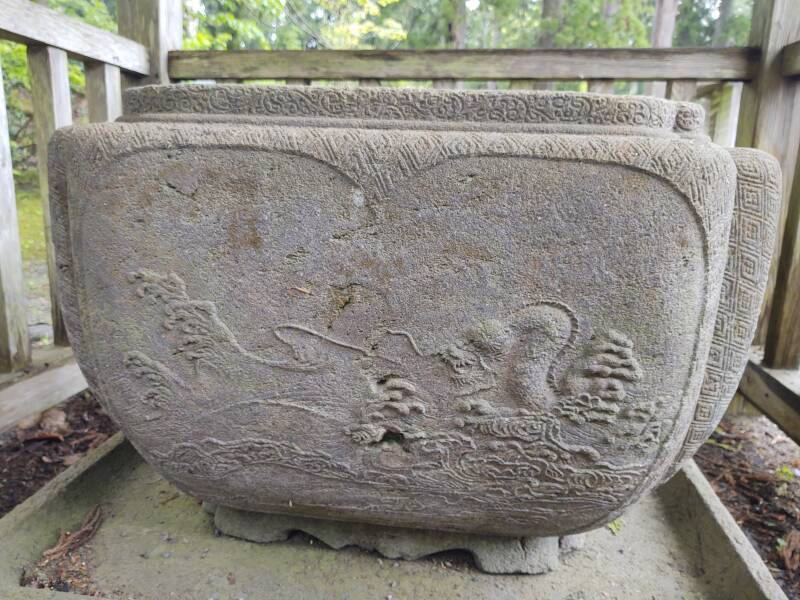

Histogram equalization can bring out some of the relief.
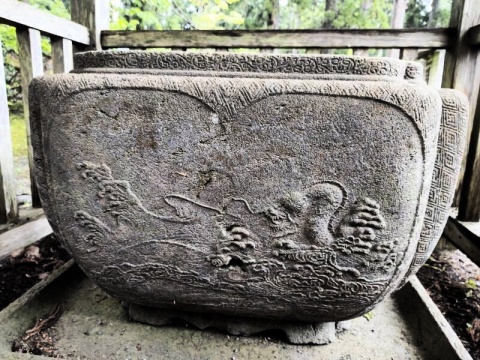
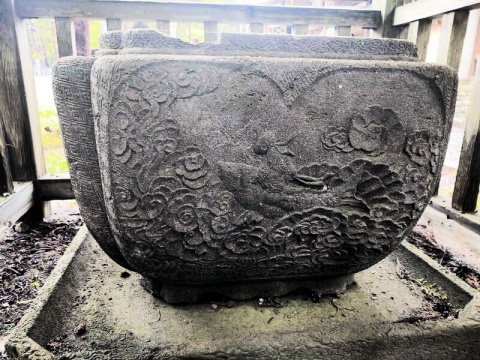
Tōshō Shrine
The samurai and the Shōgun were mostly Buddhist. However, the Tokugawa Shōgunate was also eager to enshrine their shōguns as kami.
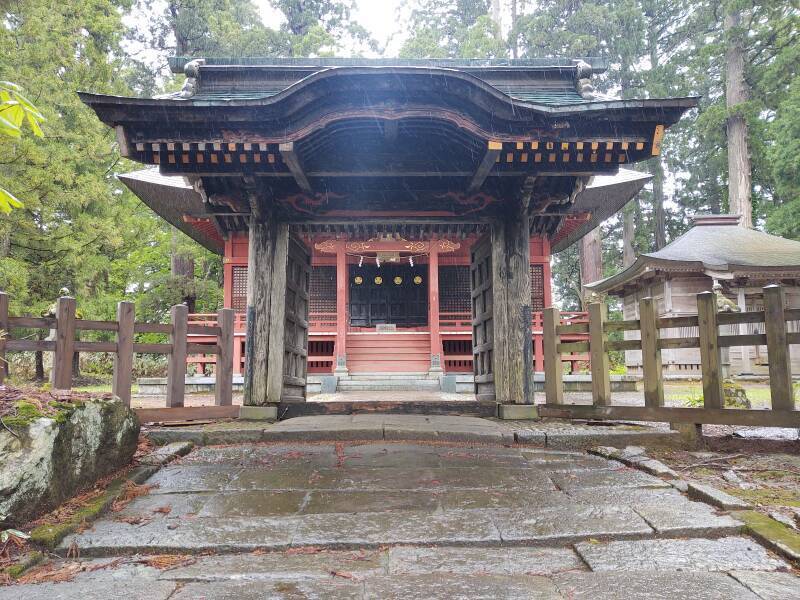
Tōshō Shrine
Constructed by the feudal lord of Shōnai,
Sarmon'nojō Sakai, in 1643,
the current building was dismantled and repaired in 1886.
Tōshō Dai-gongen,
the Great Avatar of Ieyasu Tokugawa
The enshrined form of the first shōgun
of the Edo period, Ieyasu Tokugawa (1542-1616) as a deity
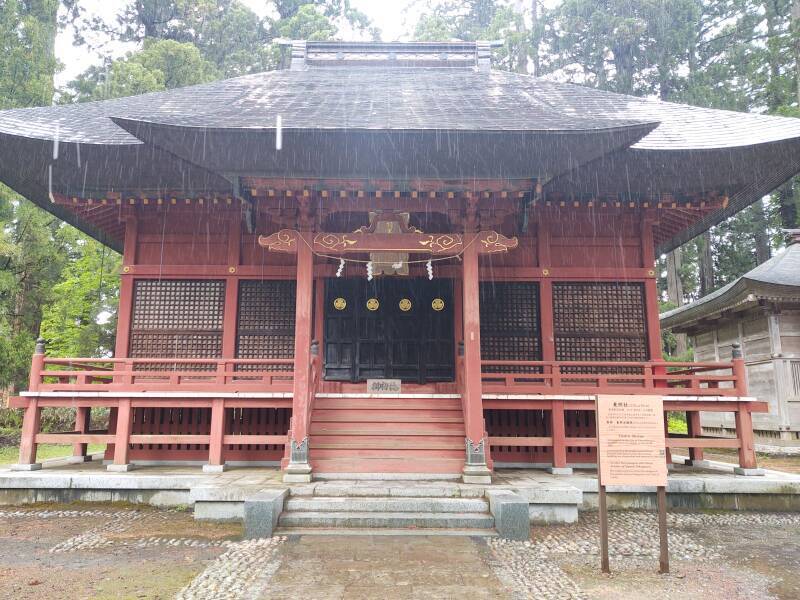
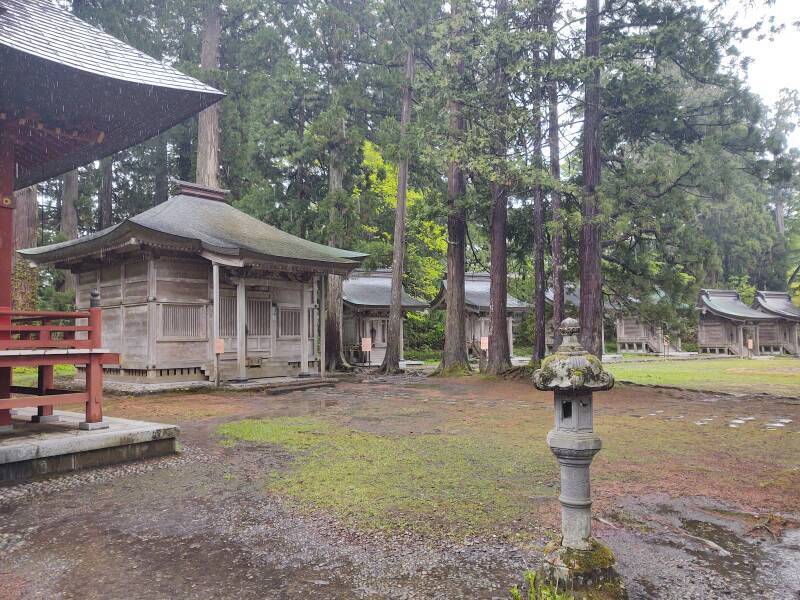
Next❯ Exploring Haguromachi, the Town at the Base of Mount Haguro
Other topics in Japan:
